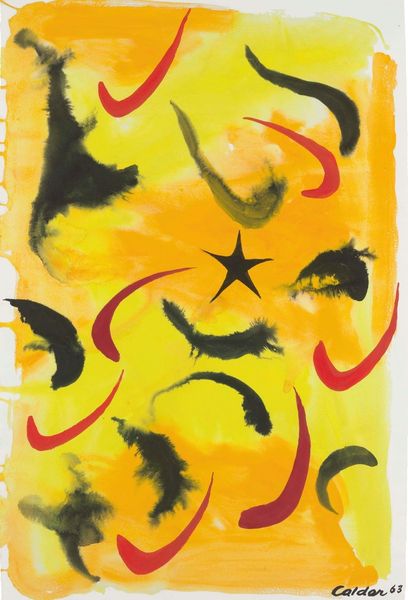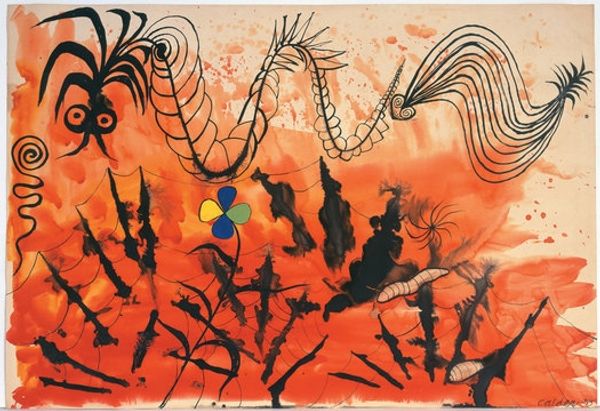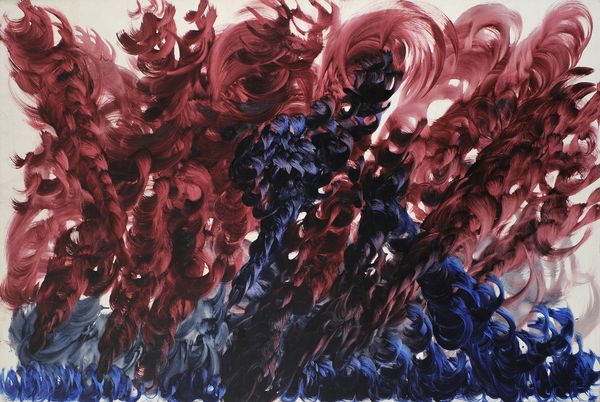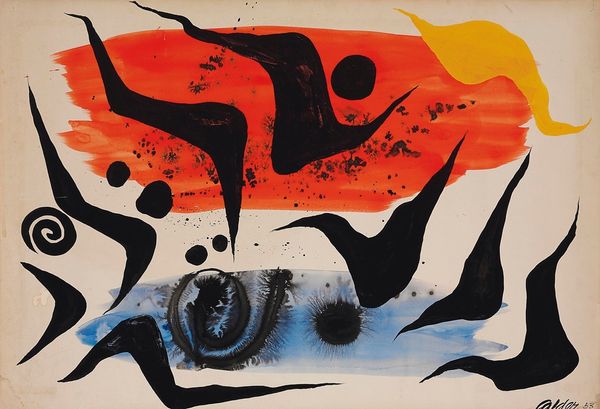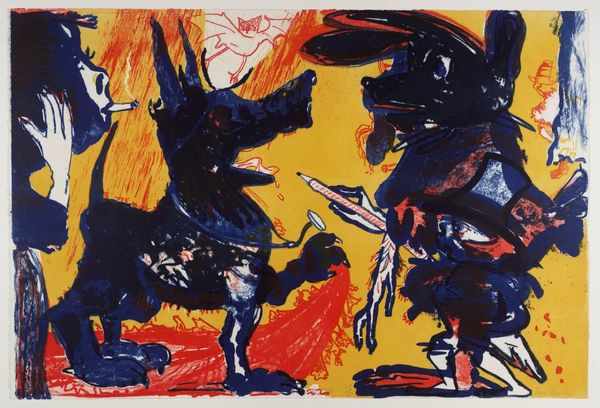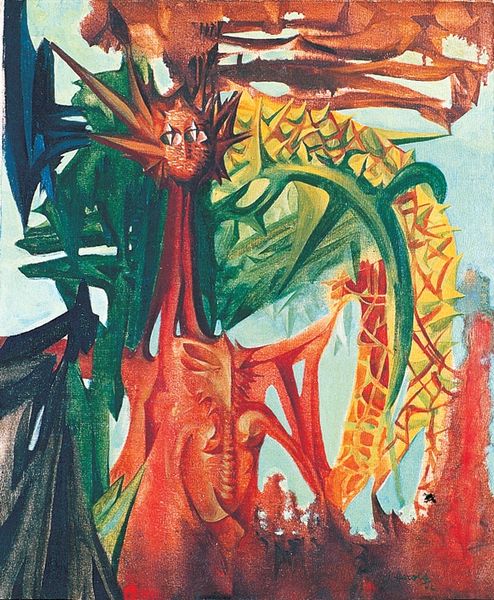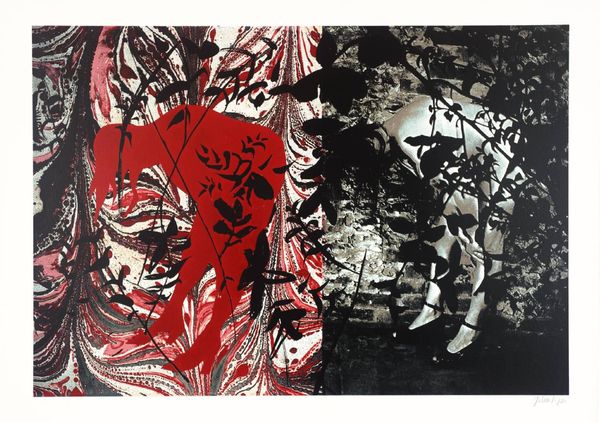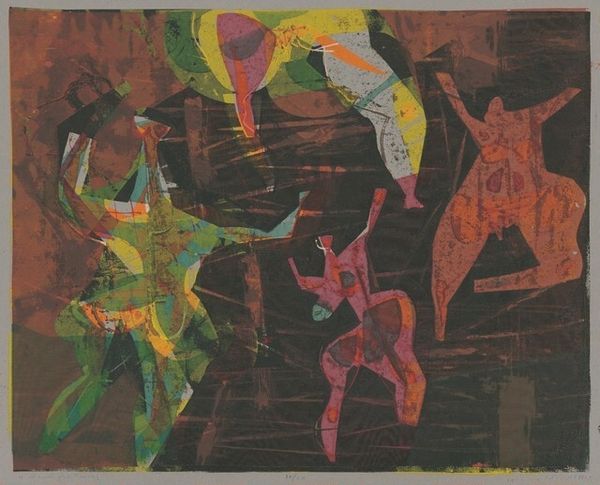
mixed-media, acrylic-paint, watercolor, ink
#
abstract-expressionism
#
abstract expressionism
#
mixed-media
#
acrylic-paint
#
abstract
#
form
#
watercolor
#
ink
#
geometric
#
abstraction
#
line
#
modernism
Copyright: Modern Artists: Artvee
Editor: This is "Diluvial" by Alexander Calder, created in 1953. It's a mixed media piece with acrylic paint, watercolor, and ink. There's a real sense of dynamic energy here, a kind of organized chaos in the abstract forms and contrasting colours. How do you interpret this work? Curator: Considering the socio-political climate of 1953, during the height of the Cold War, "Diluvial" seems to tap into anxieties surrounding potential destruction and transformation. The title itself, referring to a great flood, might allude to the fear of nuclear annihilation permeating the public consciousness. Notice how Calder uses these abstract forms. Do you see any symbolic figures arising from the depths, fighting the sky's destruction? Editor: I see what you mean about a looming threat, almost like something emerging from the chaos. The geometric shapes, especially the stark black lines against the brighter colors, definitely create a sense of tension. So, you see the work as less of a pure abstraction and more as a commentary on the anxieties of the time? Curator: Precisely. Calder, while known for his mobiles celebrating movement and balance, was not immune to the societal pressures around him. Abstraction, for many artists of this period, became a way to express the unexpressable, to grapple with feelings too complex or dangerous to articulate directly, especially with looming questions around visual presentation of imagery within governmental standards and Cold War censorship. The use of readily sourced and cheap material meant he could get it “out there” quicker as well. How might this have affected audience perceptions at the time? Editor: That's fascinating, and I never thought about the political dimensions influencing even abstract works like this. It makes me see the painting in a whole new light. Curator: Indeed. By examining art through the lens of its historical context, we gain a deeper understanding of its cultural significance and its resonance with the audience it aimed to inspire, especially when the art reflects political climates. I hope to share even more another day.
Comments
No comments
Be the first to comment and join the conversation on the ultimate creative platform.
